According to myths, the Hung Kings, the first kings of Vietnam, chose this land to build the first capital and named it “Van Lang”. Nowadays, when one asks any Vietnamese what they know about Phu Tho, the first response will probably be the Hung Pagoda. This is the place where people worship the Hung Kings and one of the most important historical sites of the nation.
The many traditional festivals taking place in Phu Tho differ. Each of them embraced the most distinctive cultural values of more than 20 ethnic groups residing there. Hung Pagoda Festival, Phet- Hien Quan Festival, Bach Hac Festival, and others are some of the most popular ones which attract thousands of visitors every year.
Below are the top tourist destinations in Phu Tho:
Heaven Pond – Fairy Spring

According to fairy tales, whoever has the luck to bathe in Heavy Pond-Fairy Spring for three years will have skin as bright as a pearl, a face as beautiful as a full moon, and a soul as elegant as that of a fairy. This place has become a magically attractive destination in Phu Tho province.
Heaven Pond – Fairy Spring is located on Na Mountain, the highest one in Ha Hoa district, Phu Tho province. Tourists need to drive only 80km away from Viet Tri City to reach it.
The road to the Heaven Pond - Fairy Spring lies between hundreds of mountains peaks which have the average height of 500-600m above sea level. However, the 1200m high peak of Na Mountain surpasses them all and stands spectacularly against the blue sky.

Fairy Spring originates from Na Mountain. Running through the giant blocks of stones, it becomes a strip of white silk hanging on the mountains’ slope, standing out from the green color of the forest and blending in with the blue color of the sky to make a spectacular yet mysterious scene. With a length of 10km, the spring is full of rocks and yellow sand that filter the water. At the origin of the spring, we can find the Fairy Well.
From the bottom of this well, water rushes up to form Fairy Spring which then creates as many as 14 beautiful waterfalls. Some of these waterfalls are 20m high; they look like immaculately white curtains covering the gates of many hidden caves. The powerful flow of water has worn the giant stones on the foot of the waterfalls, creating ponds of various sizes which have stones as their bottom. Local tales describe this place as where the fairies came frequently.

The king of heaven raised the level of water so that it overflowed the well and poured down the mountain and formed the waterfalls that we see today. Perhaps because of these tales, Fairy Spring seems more magical. Especially during hot summer days, hundreds of people go there to relax and admire the scenery.
Ao Chau Pond
Vietnamese people are justifiably proud of Ha Long bay, the UNESCO natural heritage site. However, not many people know about its mini version in Phu Tho, the Ao Chau Pond. This beautiful site has been receiving more and more attention in recent years.
Situated about 50 km from Phu Tho district and 70 km from Viet Tri city, Ao Chau pond hasgreat tourism potential.
Ao Chau Pond, as its name goes, looks like a blue sparkling orient pearl. The Pond lies within the area of three communes Am Thuong, Am Ha, Y Son, in Ha Hoa district, Phu Tho province.

Ao Chau Pond has water surface area of about 2 km2 with 100 large and small islets covered by rich vegetation. The highest point on these islets is up to 177 m above sea level (33 m above water surface). It is interesting that the water level in the pond always has an average depth of three meters; the deepest water level is 35 meters.
The pond is always clean, which is favorable for the procreation of underwater species such as Trionychid turtle, Golden Turtle… The locals have planted fruit trees like jackfruit, pomelo, longan, litchi, starfruit and others nearby.

In 2001, Phu Tho province approved the detail planning for Ao Chau Pond tourist site with the total area of 1.500 hectares. A project was set up to make Ao Chau pond an eco-tourist site with aresort, rowing, fishing, mountain climbing, etc.
Coming to Ao Chau Pond, tourists will have a chance to enjoy the fresh atmosphere, tasty fruits, and delicious dishes.
Thanh Thuy Hot Spring
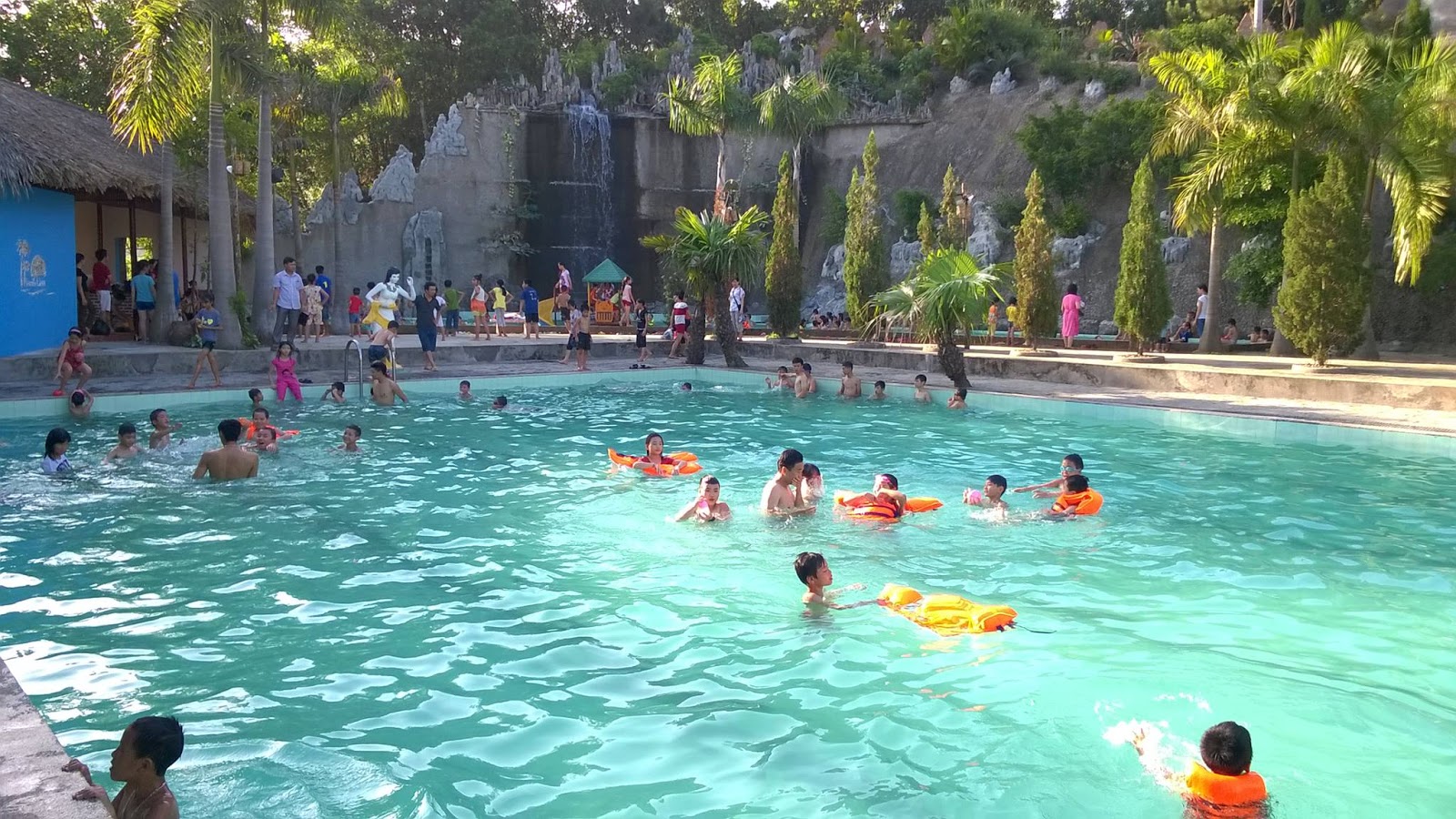
Thanh Thuy Hot Spring Resort is a 1km2 area, located to the west of the Da River. It is located in Thanh Thuy district in Phu Pho Province.
Only 65km away from Hanoi, it is arare and valuable source of hot spring in northern Vietnam. The water there is taken from the wells that are about 30m – 60m deep.
In the swimming pools and the sauna bathtub, cold water must be added to cool off the hot water. Thus, they usually say that cold water in Thanh Thuy is much more valuable than the so-called hot spring water. The water from hot spring can help heal arthritis and skin diseases.
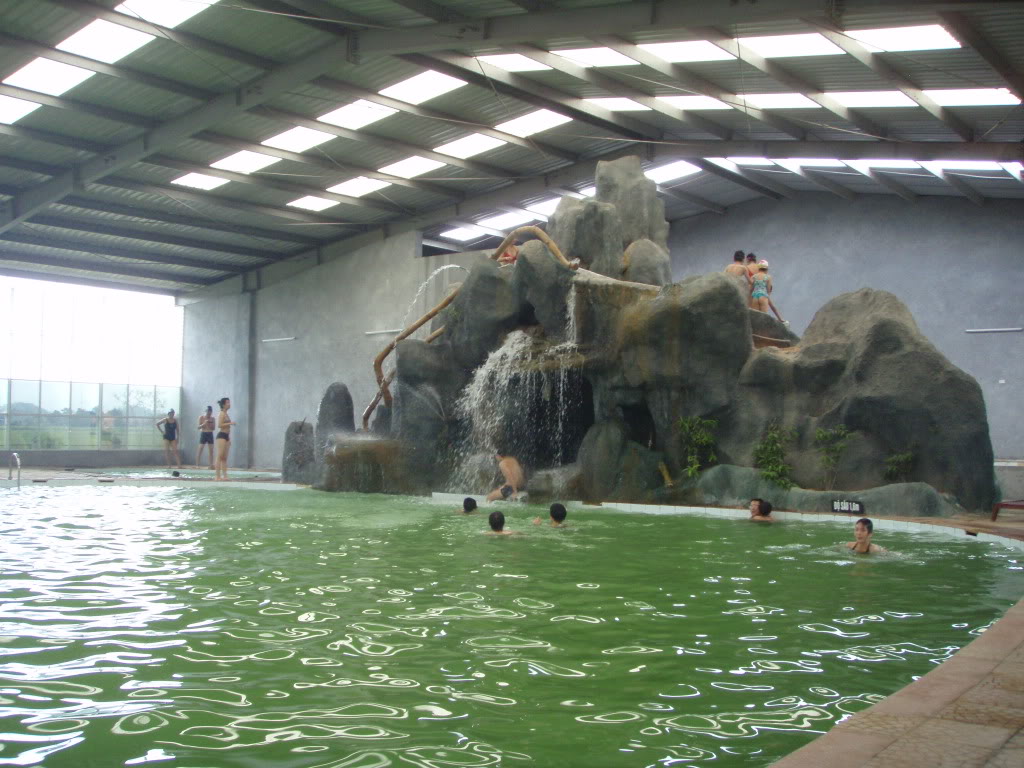
This 20 million cu.m source of hot spring was discovered about 25 years ago but the potential is yet to be explored fully. As a result, in the last few years, the local government has reallocated a large portion of its budget to encourage the development of tourism in Thanh Thuy.
After research, scientists showed that Thanh Thuy hot spring water has an average temperature of 37oC - 43oC (the highest temperature ever recorded was 53oC). It includes many minerals such as sodium, calcium, etc. and especially radon, a beneficial mineral used in the treatment of diseases such as cancer.
Radon not only cures many skin diseases but also enhances the flow of the blood inside the body; it is good for the heart and the skin. If you have some painful joints or tired muscles, soaking yourself in this type of water for 30 minutes/ day in addition to massage will greatly reduce and then kill your pain.
After enjoying the wonderful hot spring water, visitors can savor many specialties of Thanh Thuy such as Stone Mountain Goat, Da River Fish, Thuong Chicken, etc. among which Da River Fish is the most famous cuisine. This is the type of fish caught from Da River which produces a typical flavor when cooked: fragrant, sweet, but not buttery. The second-best choice is Thuong Chicken which is raised on the high mountains in Phu Tho.
Temple of Kings Hung

Traveling 85km from Hanoi, tourists will reach Kings Hung Temple of Phu Tho. The Temple of Kings Hung is a complex of majestic architectures, which consists of Ha Temple, Gieng Temple, Trung and Thuong Temple, Thien Quang pagoda and King Hung Tomb.
Temple of Kings Hung was built on Nghia Linh Mountain, 175 meters above sea level, Phong Chau District, Phu Tho Province.
Ha Temple: 225 brick steps between Dai Mon Gate and Ha Temple, built in the 15th century.
According tomlegend, in this place, Au Co gave birth to a pouch containing 100 eggs, which later hatched to become 100 children. Her husband, Lac Long Quan, led 50 children down to the coastal region to populate the land and propagate the race. Au Co brought 49 children up to the mountainous area. The eldest child, Hung Vuong, was left to become King; he founded the capital in Phong Chau and named the country Van Lang.

In front of the Ha Temple, there is a 700-year-old tree. It is in this temple where late President Ho Chi Minh had a talk with soldiers on their way to Hanoi in 1954. He told them "The Hung Kings had the merit of founding the country. You and I must stick together to safeguard it."
Trung Temple: Over 168 brick steps must then be climbed to get to Trung Temple. According to legends, the Kings Hung built the house as a place to rest and hold political meetings. It is also where Prince Lang Lieu presented sticky rice cakes (Banh chung and banh day) to his father the King on the occasion of Tet Holiday.
Thuong Temple: Over 102 brick steps from Trung Temple to get to Thuong Temple, exclusively used for the kings to have offerings to the Sun God, the Earth God, the Rice God, and Saint Dong, a legendary hero, defeated the An invaders of the ancient Chinese Dynasty. This is also the place where King Hung, the 18th, abdicated in favor of Thuc Phan, who erected a stone pillar and swore to take care of the temple and of the Hung family's inheritance.

The tomb of the 6th King Hung.
Gieng Temple (Well Temple): At the foot of the mountain is the Gieng Temple, where people worship Ngoc Hoa and Tien Dung, the 18th Hung King's daughters. It is said that the two princesses combed their hair and looked at themselves in the water of this well.
King Hung Tomb: It was the tomb of the 6th King Hung. Legend has it that, after defeating the An invaders, the 6th King Hung took off his clothes and left it on the branch of the kim giao tree and died on the spot.
Hung King Temple is a historical as well as cultural attraction of Phu Tho province. Coming to Phu Tho in March of lunar year, tourists have chance to enjoy Kings Hung Temple Festival, considered one of the most important ones as itconnects Vietnamese people from all over the country together.
Tham Mountain

Tham Mountain, also known as Dau Rong Mountain, is located along the main road to the Thanh Ba industrial zone of Thanh Ba district, Phu Tho province. On the peak of the mountain is a small pond called Ao Tien (Fairy Pond), always full of pure blue water. Surrounding Tham Mountain are hundreds of small hills, located one next to another.
A state plan was established regarding the growth of many industrial plants on these hills, such as tea, lacquer-plants and mu oil trees. Cement, alcohol, and fertilizers are produced in the area. As well, there are ox and buffalo breeding farms.
Choi Waterfall

Lying on Luoi Hai Mountain, about 80 km from Hanoi, Choi Waterfall is the diamond of Cu Dong Commune, Thanh Son District, Phu Tho Province. From the center of Cu Dong Commune, the route to the waterfall is not a smooth ride in the slightest, but it is worth the trek as you take in lovely scenery from the evergreen cornfields of the Choi villagers.
Passing over the three-kilometre pathway, tourists will reach the fall and must then start to conquer it. Choi Waterfall is a system of large and small falls located close together. From a height of 50 meters, the white fall looks like a silver carpet striking under the glistening sun rays. The stream runs through large green-mossed rocks as the water streams overwhelm the area, making it completely white. The fall is covered by dense green trees and on the rock walls are interlacing roots of ancient trees.
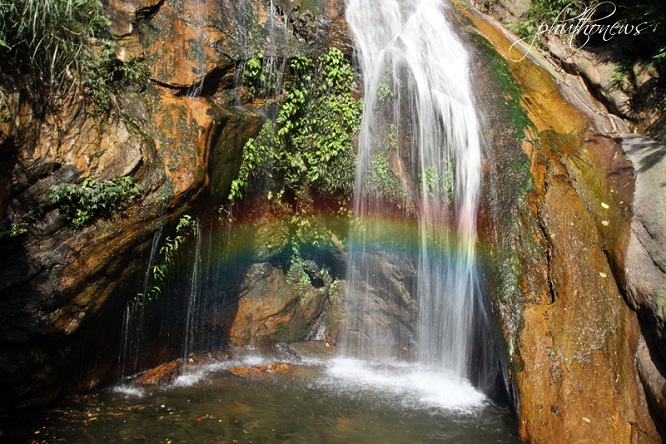
Climbing a sloping, short section to get to the second waterfall, tourists can take in the panoramic view of Choi Waterfall’s downstream area. Amid the immense forest is a sinuous long streak of the stream. In the distance, the scenery is studded with house roofs in rice and corn fields. Standing there, travelers can sense both the magnificence and romance of Thanh Son.
To get to the next level of the fall, tourists need to trek up a rather tricky slope with stiff rock walls. The terrain is rather tough and rocks are slippery so trekkers must be very careful. However, the beauty of the fall is a challenge for the adventurer in us all who like to challenge nature.
The journey is not over until tourists reach the third level which has a poetic and pure stream looking like a sleeping beauty in a primitive forest. The stream sneaks through rock slots and sometimes pours down rock cliffs. On the two banks are giant trees scattered with colorful butterflies.

At the end of the stream are two small falls running to a small valley where tourists can swim freely after getting tired of trekking. However, the water is rather deep so travelers need to wear life-jackets.
According to locals, the peak of the waterfall is on the top of the high mountain and the only way to see it is upstream the waterfall. If you are really brave and have no fear, don’t hesitate, but pack a bag and be very careful.
Xuan Son National Park
Xuan Son National Park is located at the extreme southeastern part of the Hoang Lien Mountains, in the watershed of the Red River.
Elevations at Xuan Son are lower than elsewhere in the Hoang Lien Mountains: the nearest point above 2,000m is 40 km to the northwest.
Limestone karsts covers 1,661 ha, equivalent to 30% of the area of the national park. The limestone karsts contains a large number of caves, some of which contain river systems.
The natural vegetation types at Xuan Son are lowland and lower evergreen forest, as well as lowland and lower limestone forest. To date, 314 vascular plant species, 48 mammal species, 121 bird species, 13 reptile species and 14 amphibian species have been recorded at Xuan Son National Park.

The flora of the Xuan Son National Park is very rich and diverse, including 180 families, 680 genera and 1,217 species of six vascular plant phyla. There are 40 endangered species (representing 3.4% of the total species of the flora of the Xuan Son national park) listed in the Red Data Book of Vietnam (2004), that need to be given priority for conservation and protection.
Useful plant resources comprise medicinal plants (665 species); timber plants (202 species); vegetables and edible fruits (132 species); ornamental plants (90 species); aromatic plants (26 species); bamboo, rattan, fern, jute (9 species); forages (12 species); floriferous plants (9 species) and poisonous plants (8 species).
Mother Au Co Temple
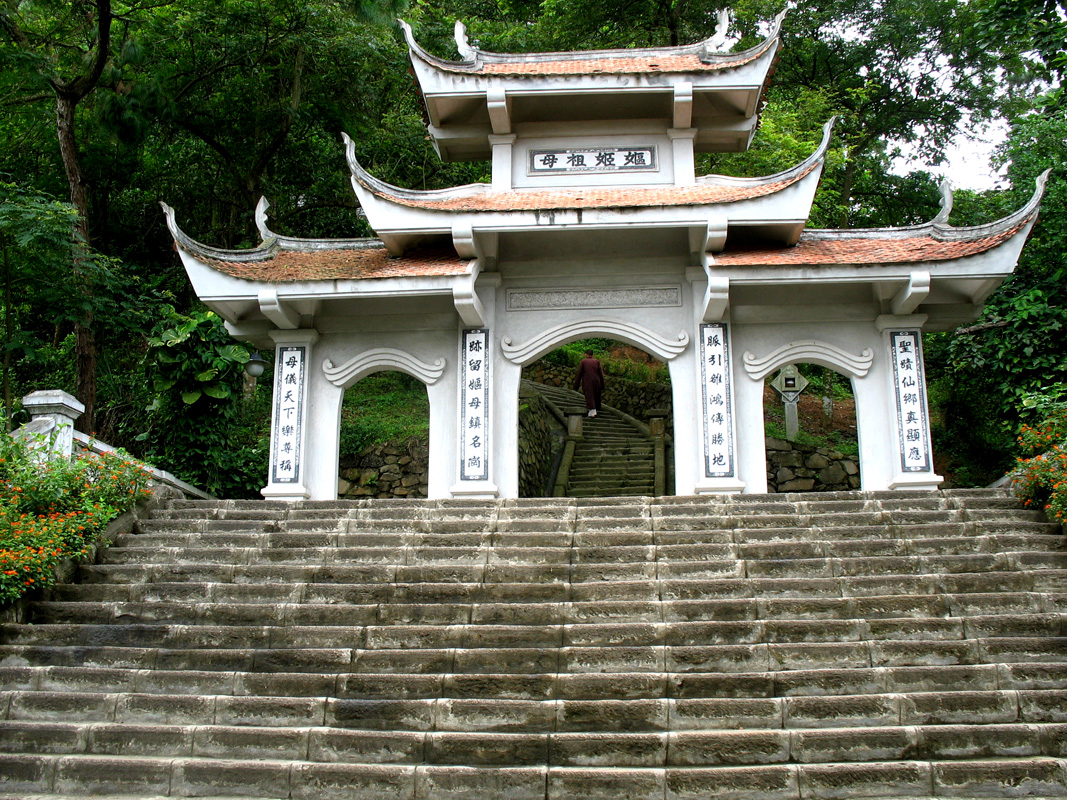
The Temple of Au Co Mother was established in Hien Luong commune, Ha Hoa district, where there are heaps of mountains, a large reservoir and a range of flat plains along the river.
According to legend, Vietnamese people are descendants of Father Lac Long Quan and Mother Au Co. After a 3-yearand10-month pregnancy, Mother Au Co gave birth to 100 eggs which hatched 100 sons. Father Lac Long Quan took 50 sons to the sea. And Mother Au Co, after leaving her first son on the Nghia Linh Mountain, took another 49 sons to Hien Luong commune for living. She and her sons broke fresh ground and founded villages.

One day, Mother Au Co flew to the sky and left a pink blouse at the foot of a banyan tree. Hien Luong’s peoples built a temple at the foot of the tree in honor of the mother’s merit called the Temple of Mother Au Co.
On the left side of the temple is Loan well and on the right side is Phuong well. Opposite the temple is lovely Giac Mountain and behind is winding Hong River. Luxuriant trees surround the temple.
The Mother Au Co Temple consists of 5 large sacrifice rooms and 3 harem rooms. Inside the temples is a system of ancient relics of high arts like Au Co Statue, Duc Ong Statue, etc., which are embossed carefully. Au Co Statue is 85 centimeters high and in a 3-side glass cage, which is on an altar located at the height of 2.2 meters in the last room of the temple.
Lang Cave

Lang Cave, which belongs to Xuan Son commune, Thanh Son district, lies very deeply in the mountain. The mouth of the cave is right in front of Muong Lang field. This is the largest and longest stalactite cave in Xuan Son.
At some points, the roof of the cave is even 15 or 20 meters in height, and its width nearly the same size. The cave extends along the limestone mountain. There is a large stream flowing along the bottom of the cave. At the points where the cave expands, its foundation is covered with a layer of rocks, yellow sand and clay. On the roof of the cave, there are stalactites. Through millions of years, they have created many beautiful and different forms.
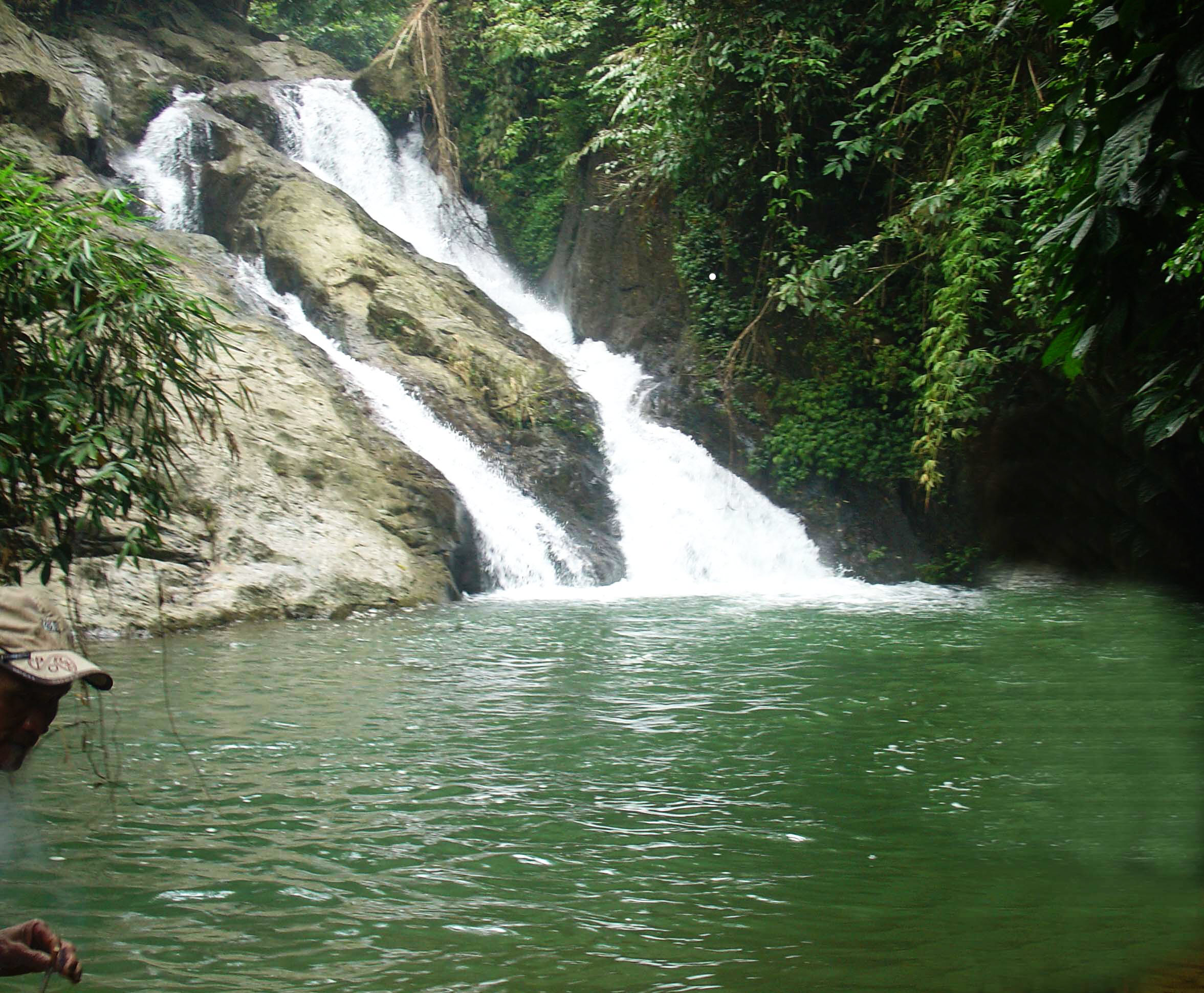
Going deeper into the cave, there are many pillars, created and adorned by nature. These pillars prop up from the cave’s bottom to its roof, like from hell to heaven. It makes for a very impressive scene.
These slabs of stalactite make the cave mysteriously beautiful. The stalactites here do not tarnish and turn grey as in some other caves of some limestone mountains. Most of them are bright and white, and some even gleam purple and pink. The scene is beautiful and unique.
Lang Cave is big enough for thousands of people to come to visit at the same time. Distant from its mouth for a few hours of walking, the cave’s bottom turns into a stream with the depth of 2 meters. From there, the journey can be continued. However, since it is quite dark, tourists in Vietnam will have to use a torch to discover the hidden beauty of this cave.
Ngoc Xanh Island

Ngoc Xanh Island is located in La Phu Commune, Thanh Thuy District. The Ngoc Xanh Island senior ecosystem is built on the floating dump on the Da River with the area about 65 ha.
Ngoc Xanh Island is an impressive place with abundant ecotourism population, public entertainment, senior resorts, physiotherapy area, swimming pool, mini golf course, tennis course, restaurant and theatrical folk art performance….
Coming to this place, tourists enjoy the professional attitude of service and the green atmosphere.
Coi Village

Coi Village is located in Xuan Son Commune, Tan Son District, about 12km from Xuan Son Nation Park, creating a colorful picture with the Ten mountain and terraced fields changing colorwith the seasons. In early morning, the mist drifts and bobs around mountain tops.
Coi Village is home to Dao ethnic minority with 85 households and 400 villagers. They live by cultivating the terraced fields and grazing livestock. The village has well-preserved Dao cultural characteristics: houses with thatched roofs and earthen walls; special ceremonies and rituals like le cap sac, dances, traditional foods, costumes, handicrafts...

Visiting the village, tourists can experience local daily activities like cooking local food (bamboo shoot soup, cakes made from sweet potato mixed with sesame, melientha suavis soup...), feeding livestock, picking tea leaves on the hill, catching fish in the stream, brewing wine, dying cloth...
Compiled by Pha Le